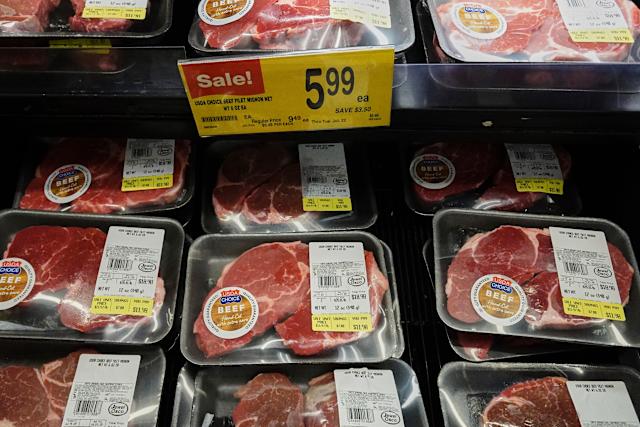Why Ranchers Struggle to Grow Herds Despite Beef Price Highs

Ranchers Struggle to Expand Herds Despite Record Beef Prices in 2025
U.S. consumers are paying record beef prices in 2025, yet ranchers say expanding their herds to meet demand isn’t as easy as it sounds. Despite soaring prices, years of drought, land scarcity, and biological limitations are holding back supply.
Beef Prices Soar, But Herds Remain Small
The average retail price of ground beef climbed to $6.12 per pound in June, up nearly 12% from last year. Steaks rose 8%, reaching $11.49 per pound. At the producer level, cattle prices jumped from $1.51 per pound in 2020 to $4.05 in May 2025.
But according to USDA data, the total U.S. cattle herd is the smallest since at least 1973, with no strong signs of herd rebuilding. As of July 1, 2025, the country had 94.2 million cattle, down from nearly 103 million in 2019.
South Dakota Ranchers Feel the Pinch
In southeastern South Dakota, Calli and Tate Williams raise 70 cow-calf pairs and dream of growing their operation. But after multiple seasons of drought, high hay prices, and rising land costs, expansion remains out of reach.
“We’d love to expand,” said Calli. “But that’s a long-term goal. Maybe 10 years, maybe more.”
Last year, they sold all their young females due to lack of feed, which cost them future calves. Although recent rains have improved conditions, they’re still in recovery mode.
Drought, Climate, and Biology All Slow Growth
Agricultural economist Michael Swanson explains that even with ideal conditions, it takes years to grow a herd: “From decision to calving, to maturity—it’s at least three years.”
And with many ranchers still financially recovering from the 2019–2021 downturn and uncertain about future weather, hesitation remains.
Colin Woodall of the National Cattlemen’s Beef Association said, “You don’t want to rebuild your herd just to liquidate again in six months if drought returns.”
Consumer Demand for Beef Remains Strong
Despite inflation and high prices, consumers continue to choose beef over pork or poultry. Kansas State University’s Meat Demand Monitor reports people are willing to pay $17.62 per pound for rib-eye and $8.82 for ground beef.
“Beef is the favorite because of the eating experience,” said Woodall. “The quality today is the best we’ve ever produced.”
Still, marketing specialist Derrell Peel says more affordable proteins like pork and chicken offer alternatives for cost-conscious shoppers.
A Resilient Industry Looks Ahead
The Williamses, who started TW Angus from scratch, hope their operation will one day pass to their two young sons. Until then, they remain cautious but hopeful.
“We’re optimistic,” said Calli. “If drought hurt us this year, maybe next year Mother Nature will be kinder. If prices fall, maybe they’ll rise again.”
Source: AP News
: 89







